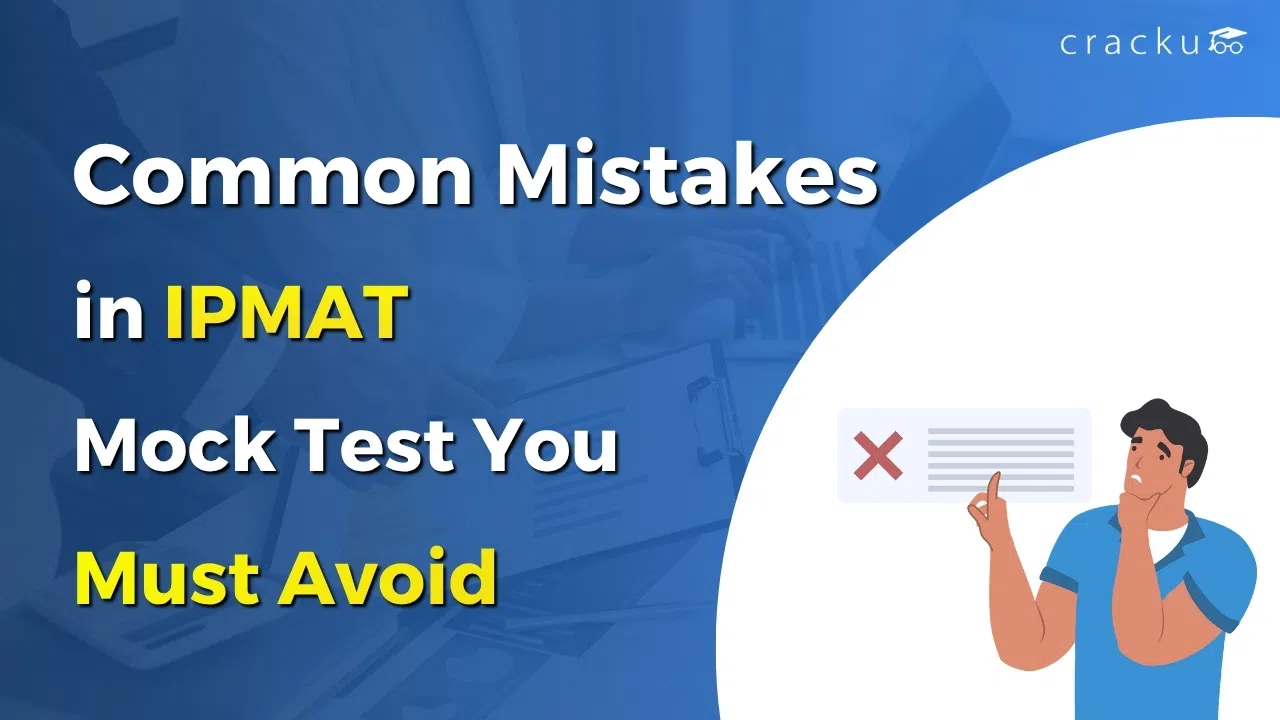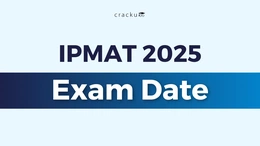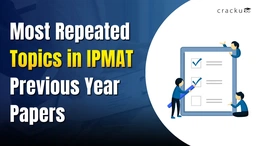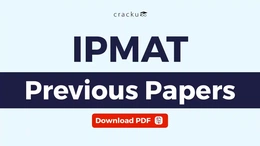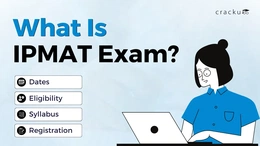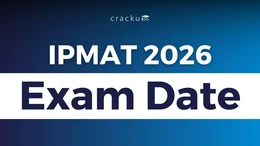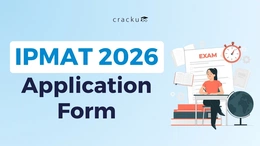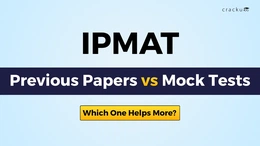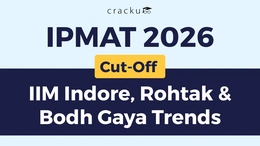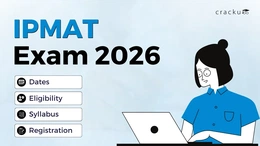The IPMAT Mock Test is a practice for the actual IPMAT exam. It is the single most important tool to master the exam’s rigid structure. The IPMAT Indore exam has 90 questions. These are split into three sections: Quantitative Ability (MCQ), Quantitative Ability (Short Answer), and Verbal Ability. You get 120 minutes in total. But here’s the catch. Each section has a strict 40-minute time limit. You cannot jump between sections. When 40 minutes are up, the test forces you to the next section. Done. No going back.
You get +4 marks for a correct answer. But you lose 1 mark for every incorrect MCQ answer. This is a crucial detail. Students don’t fail because they don’t know the answer. They fail because of a few critical mistakes. They repeat mistakes over and over. These errors are almost always tied to time management, blind guessing, and what they do after the test. These are the mistakes that stop them from clearing the all-important sectional cut-offs.
Mistakes in IPMAT Mock Tests You Must Avoid
Performance data from thousands of mock tests points to several critical, yet avoidable, errors. Beyond the major strategic areas discussed in this article, four specific mistakes frequently undermine a candidate's score:
Calculation Errors
These are not knowledge gaps but lapses in focus. Data shows 38% of candidates make simple calculation errors in the Quantitative section, such as sign errors or decimal point misplacements.
Misreading the Question
A significant number of errors, 18% in the QA section alone, starts from misreading what the question asks for. A classic example is solving for 'x' when the question requires the value of '2x'.
Poor Question Selection
A lot of people waste time on hard questions instead of getting points on easier ones first. This often means that people don't try to answer high-scoring, easy questions because they don't have enough time.
Not Learning the Basics
A lot of the time, students start solving advanced problems without first learning the basics. This method doesn't work because complicated questions are often based on basic ideas that weren't fully understood.
Time Management Mistakes in IPMAT Mock Tests
The biggest time management mistake is simple. Treating every section the same. Yes, each section is 40 minutes long. But the number of questions is wildly different. This creates a huge gap in the time pressure you feel. If you use the same mental clock for all three sections, you are setting yourself up to fail.
The numbers don't lie. The exam’s structure demands a different speed for each part.
- Verbal Ability (VA): You face 45 questions in 40 minutes. That’s about 53 seconds for each question.
- Quantitative Ability (QA - MCQ): You have 30 questions in 40 minutes. This gives you 80 seconds for each question.
- Quantitative Ability (QA - SA): Here, you get 15 questions in 40 minutes. A much more relaxed 160 seconds for each question.
Also Read, IPMAT Exam 2026, Dates, Eligibility, Syllabus and Registration
Your strategy must adapt. The Verbal section is a sprint. The QA-SA section is a measured jog. You need a different plan for each.
Section | Number of Questions | Time Allotted (minutes) | Average Time per Question (seconds) |
Verbal Ability (VA) | 45 | 40 | 53 seconds |
Quantitative Ability (MCQ) | 30 | 40 | 80 seconds |
Quantitative Ability (SA) | 15 | 40 | 160 seconds |
Blind Guessing & Negative Marking Errors in IPMAT Mocks
The +4/-1 marking scheme is a trap for the unprepared. It is designed to punish random guessing. Many students make one of two mistakes. They guess too much and watch their scores drop. Or they are too scared to guess at all, leaving easy points behind. You need a strategy based on simple math, not just gut feeling.
Think about a blind guess. You have four options. Your chance of being right is 1 in 4, or 25%. A return of +0.25 marks is tiny. It’s statistically better than nothing, but a few wrong guesses in a row can destroy your score. It’s a low-reward, high-risk move.
Now, consider an educated guess. This is different. This is like a detective eliminating suspects. If you can confidently rule out two of the four options, your chance of being correct doubles to 50%. This is a smart bet. The rule is simple. If you can eliminate at least two choices, you should attempt the question.
But the most important detail is in the Quantitative Ability (Short Answer) section. This section has no negative marking. An incorrect answer gives you zero marks. Not -1. This makes the QA-SA section a golden opportunity. A free-hit. The strategy here is absolute. You must attempt all 15 QA-SA questions. Leaving any of them blank is like leaving free money on the table. There is no penalty for trying.
Neglecting Detailed Analysis After Your Mock Test
Taking an IPMAT Mock Test is only 50% of the job. The real learning, the real improvement, happens after the test is over. Just glancing at your score is not analysis. That’s passive. Real analysis is an active process. Your analysis must give you a data-driven plan.
A proper analysis is a structured, four-step process.
- Step 1: Re-Attempt Every Question. Don't just look at what you got wrong. Sit down and solve the entire paper again, this time without a timer. This helps you see if your mistakes were due to pressure or a real lack of knowledge. Then, categorize every single question.
- Correct & Confident: You knew it, you solved it. Good.
- Correct but Guessed: You got lucky. This topic needs review.
- Incorrect (Conceptual Gap): You didn't know the formula or concept. This is a major red flag.
- Incorrect (Silly Mistake): You knew the concept but made a calculation error. A sign of pressure or lack of focus.
- Unattempted: You ran out of time or had no idea how to start.
- Step 2: Create a Notebook for mistakes. This is your most powerful tool. A simple notebook or spreadsheet where you log every mistake.
- Conceptual Errors: A weak topic. Action: Re-study the entire chapter.
- Careless Errors: Simple mistakes like 5 x 8 = 45. Action: Practice mindfulness and double-check all calculations.
- Time-Related Errors: Rushing and making a mistake because the clock was ticking. Action: Do more timed sectional tests.
- Step 3: Analyse Your Time. Go back and look at the time you spent on each question. The mock software provides this data. Did you spend four minutes on a question that should have taken 80 seconds? These are "time traps." You need to learn to identify and avoid them.
- Step 4: Build an Action Plan. Your analysis is useless without a plan.
- For Conceptual Gaps, schedule 2-3 hours to re-learn the topic from scratch.
- For Careless Mistakes, build a habit of reviewing your work before moving on.
- For Time Traps, practice recognizing difficult questions and skipping them immediately.
This process creates a powerful feedback loop. You take a test, find your weaknesses, create a plan to fix them, and then repeat. This is how you improve.
Focusing on Score Over Accuracy & Weak Topics
This is the final, and perhaps most fatal, mistake. Chasing a high overall score while ignoring a weak section. The IPMAT Indore selection process simply doesn't work like that. A brilliant total score means nothing if you fail to clear the mandatory cut-off in even one of the three sections. One weak link breaks the entire chain.
The historical data is clear. Think of the sectional cut-offs as three separate hurdles you must clear.
Section | 2023 Cut-off Score | 2024 Cut-off Score |
Quantitative Ability (SA) | 12 | 24 |
Quantitative Ability (MCQ) | 39 | 35 |
Verbal Ability (VA) | 125 | 113 |
Look at the data. A massive score in Verbal Ability cannot save you from a poor score in Quantitative Ability. In 2024, the cut-off for the QA-SA section for the General category was 24. If you scored 23 in that section, you were out. It doesn't matter if your total score was 300. You are disqualified. Period. Also, notice how the QA-SA cut-off doubled from 12 in 2023 to 24 in 2024. This shows you can't predict these numbers. You must be prepared.
This is why accuracy is so important. A strategy of attempting many questions with low accuracy is a gamble. The -1 penalty for wrong answers can easily drag your score below a sectional cut-off. Your mock test analysis should be used to find your weakest section and attack it. Your goal is not just a high score. It is a balanced score. A score that is competent across all three sections. That is the only path to getting that interview call.
